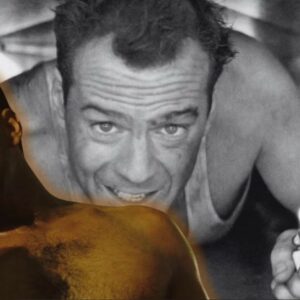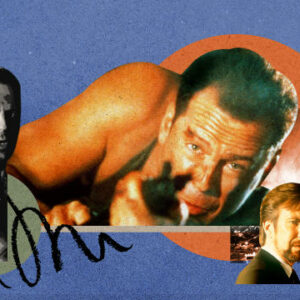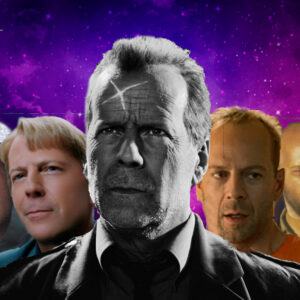Introduction
Daniel Radcliffe, a name synonymous with the iconic role of Harry Potter, has transcended his initial fame to become a versatile actor known for his diverse roles across film, television, and theater. But how does Radcliffe, now a seasoned actor with a remarkable career, land his roles? In this article, we delve into the audition process that has propelled Radcliffe from a young wizard to a celebrated performer.
The Genesis of a Star
Daniel Radcliffe’s journey began in the early 2000s with the casting of the titular role in the “Harry Potter” franchise. At just 11 years old, Radcliffe was thrust into the global spotlight, a situation that could have easily pigeonholed him into typecast roles. Instead, Radcliffe’s career trajectory reveals a strategic and intentional approach to his craft, emphasizing not just his acting abilities but also his professional decisions and the calculated risks he took.
Mastering the Art of Auditioning
Auditioning is an art form in itself, and Radcliffe’s approach to this critical stage of the casting process is a testament to his dedication and professionalism. Here’s a closer look at how Radcliffe has managed to excel in this arena:
- Preparation and Research: Radcliffe is known for his meticulous preparation. Before an audition, he immerses himself in understanding the character, the story, and the tone of the project. This thorough research helps him deliver a performance that aligns with the director’s vision while also showcasing his unique take on the character.
- Embracing Variety: Radcliffe’s career choices reflect a deliberate attempt to avoid typecasting. After the success of “Harry Potter,” he chose roles in genres vastly different from his previous work. From the dark comedy of “The Bad Education Movie” to the horror of “The Woman in Black,” Radcliffe’s willingness to explore diverse genres demonstrates his range and adaptability.
- Understanding the Role of Chemistry: In many auditions, especially for ensemble pieces or romantic roles, chemistry with other actors is crucial. Radcliffe’s approach often involves working closely with potential co-stars to establish a rapport and ensure that his portrayal aligns seamlessly with the envisioned dynamic of the project.
The Impact of Networking and Industry Relationships
In the entertainment industry, relationships often play a crucial role in securing roles. Radcliffe’s career has benefited from a network of industry connections that has facilitated his access to a variety of projects:
- Collaborations with Renowned Directors: Radcliffe’s strategic collaborations with esteemed directors and producers have been pivotal in expanding his career opportunities. Working with individuals like Jim Jarmusch and Michael Grandage not only enhances his credibility but also opens doors to high-profile projects.
- Maintaining a Positive Reputation: Beyond his professional skills, Radcliffe’s reputation in the industry as a reliable and dedicated actor contributes to his casting success. Being known for punctuality, professionalism, and a collaborative spirit makes him a preferred choice for directors and casting agents.
Navigating the Transition from Child Actor to Adult Performer
Transitioning from a child actor to an adult performer presents unique challenges, and Radcliffe’s career is a case study in navigating this shift successfully:
- Selective Role Choices: Radcliffe’s strategic selection of roles that reflect his growth and maturity as an actor has been crucial. By choosing projects that challenge him and reflect his evolving interests, he avoids the pitfalls of typecasting and showcases his versatility.
- Diverse Acting Techniques: Adapting his acting techniques to fit different genres and styles has allowed Radcliffe to demonstrate his range. Whether it’s a dramatic stage performance or a comedic film role, his ability to adjust his approach keeps his performances fresh and engaging.
Leveraging Theater Experience
Radcliffe’s experience in theater has significantly influenced his approach to film and television roles. His stage work, including performances in productions like “Equus” and “The Cripple of Inishmaan,” has honed his skills in ways that are transferable to screen acting:
- Enhanced Emotional Range: Theater demands a heightened emotional range and physicality, which Radcliffe brings to his screen roles. This depth of emotion and nuance enriches his performances and adds layers to his characters.
- Commitment to the Craft: Theater requires an intense commitment to the craft, with performances often involving long runs and demanding schedules. Radcliffe’s experience on stage reflects his dedication to his art and his willingness to invest deeply in his roles.
The Role of Personal Branding and Public Image
In today’s entertainment landscape, personal branding plays a significant role in an actor’s career. Radcliffe’s management of his public image has contributed to his success in landing diverse roles:
- Selective Public Appearances: Radcliffe’s approach to public appearances and interviews is strategic, aiming to maintain a balance between privacy and public engagement. This selective visibility helps him maintain a professional image while allowing his work to speak for itself.
- Authenticity and Personal Growth: Radcliffe’s openness about his personal growth and challenges has endeared him to audiences and industry insiders alike. His authenticity helps build a strong personal brand that resonates with both casting directors and fans.
Conclusion
Daniel Radcliffe’s success in landing diverse film and television roles is the result of a multifaceted strategy that includes meticulous preparation, strategic role selection, and a keen understanding of industry dynamics. His journey from a child star to a versatile actor showcases the importance of adaptability, networking, and personal branding in the competitive world of entertainment. As Radcliffe continues to evolve in his career, his approach serves as a valuable blueprint for aspiring actors and industry professionals alike.
In summary, Radcliffe’s ability to navigate the complexities of the audition process, leverage industry relationships, and maintain a positive public image demonstrates a strategic and thoughtful approach to his craft. His career is a testament to the power of professionalism, dedication, and the relentless pursuit of excellence in the world of film and television.





